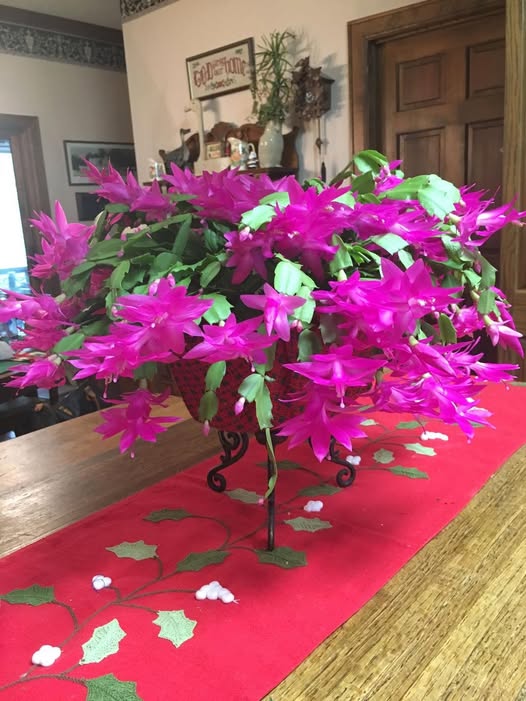Do you think you know your Christmas cactus well? Think again! This cheerful holiday plant holds a few surprising secrets.
Read on to learn why it’s technically not a true cactus, the unusual way to encourage those stunning blooms, and how to ensure your plant thrives for years to come. These are things every Christmas cactus owner should know!
Things Every Christmas Cactus Owner Should Know
1. It’s Not a Cactus
Did you know this? The Christmas cactus is not actually a “cactus” in the typical sense.
When the plant was first discovered, it was mistakenly classified as one due to its similarities with cacti–those serrated edges. The name stuck, even though it was later found to be an epiphytic plant that grows on trees naturally in South America.
Fun Fact: The Christmas cactus belongs to the Schlumbergera genus and was named after Frederic Schlumberger. The man was a 19th-century French horticulturist with a remarkable cacti collection near Rouen, France.
2. Your Christmas Cactus Could be an Imposter
There are many types of holiday cacti, majorly three, all of which look pretty similar–the Christmas cactus, the Thanksgiving cactus, and the Easter cactus. Each of these are named after the holiday or festival during which they bloom.
One of the easiest ways to tell them apart is by looking at the edges of their segments. The Thanksgiving cactus has pointed, claw-like edges, while the Christmas cactus has smooth, rounded edges. The Easter cactus has rounded edges with tiny bristles at the joints. Why don’t you check which one you’ve got?
3. It Needs a Dormany Period for Flowering
If your Christmas cactus hasn’t flowered, you’re doing something wrong. And we know the answer! As a short-day plant, it needs a photoperiod.
You need to give it this dormancy period to “recharge” and get ready to bloom. During this time, the plant will be tricked into thinking it’s fall, leading to bud formation and flowers.
To do this, you can shorten their daylight hours by moving them to a darker spot in the evening, like a closet, for about 12-14 hours each day for 6-8 weeks.
Doing so will mimic the shorter days of autumn they experience in the Southern Hemisphere from March to May, which signals to the cactus that it’s time to start preparing for blooms. Pretty neat, right?
4. Propagating One is Surprisingly Easy
LOOK ATE THE NEXT TOO PAGE
ADVERTISEMENT

